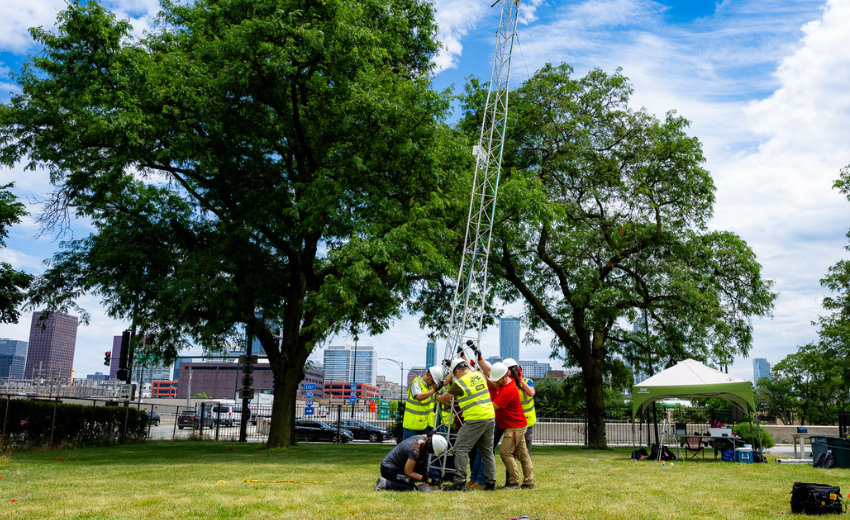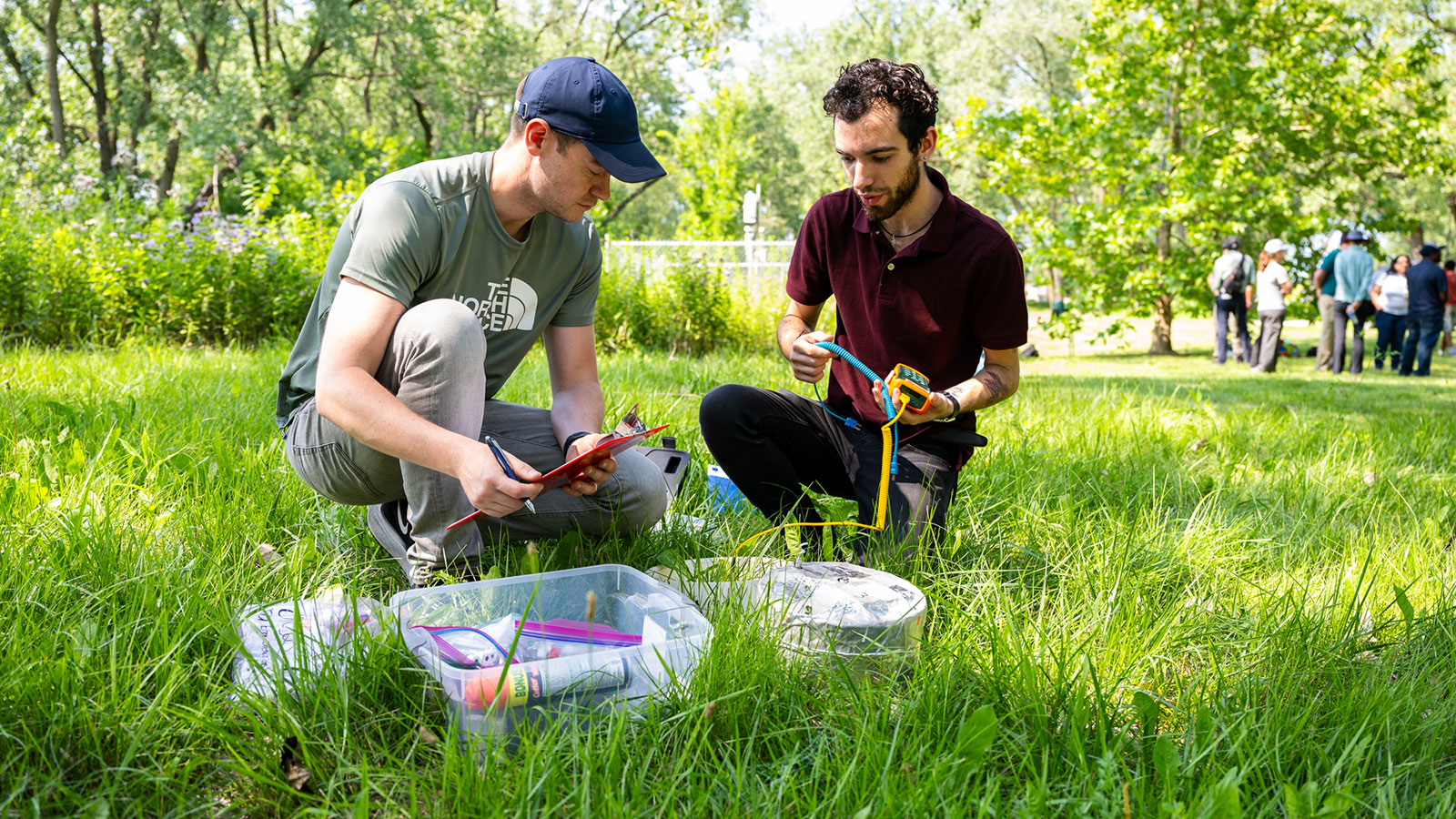
ARGONNE NATIONAL LABORATORY
Located on the grounds of Argonne Testbed for Multiscale Observational Science (ATMOS), this location is home to cutting-edge instruments and world-class experts that observe, record and interpret complex data. ATMOS is the heart of instrumentation for CROCUS. Before any CROCUS instrumentation is deployed and installed, it is first tested at ATMOS.

CHICAGO STATE UNIVERSITY
Located on the southern end of the project’s node network, it includes a rooftop and ground location. The equipment is measuring atmospheric composition, Earth system conditions, rain and soil conditions. Researchers are particularly interested in data from the ground at this site. The nearby neighborhood of Chatham experiences some of the most extreme flooding in Chicago. The new sensors will help researchers understand how different surfaces, landscapes and vegetation can absorb or channel away water.

DOWNERS GROVE
The Downers Grove Civic Center (DOWN) site offers valuable atmospheric data from a suburban setting west of Chicago. Positioned along a southwest corridor into the city and adjacent to the Metra tracks, DOWN will provide long-term measurements crucial for assessing urban-rural gradients and the influence of reduced natural landscapes on urban centers. The instruments deployed on the patio of the civic center, next to a green roof, provide data on temperature, rainfall, wind and atmospheric composition, helping to capture how Earth systems evolve as air masses move from suburban to urban areas. The site’s proximity to the Maple Grove forest Preserve further enhances its value for understanding the transition between natural and build environments within the CROCUS domain.

HUMBOLDT PARK
Humboldt Park is a prairie filled with grasses and trees but surrounded by buildings and busy roads. Data from this location will inform research on the risks of flooding, heat stress, wind, and Earth system extremes.

NORTHEASTERN ILLINOIS UNIVERSITY
Instrumentation is located on the rooftop of Bernard J. Brommel Hall on the university’s main campus. The first CROCUS site to go online, researchers installed a Waggle node — a grouping of sensors that measure wind, temperature, rainfall, snow accumulation, radiation and atmospheric composition. The equipment is capable of edge computing — processing data at the source of collection so that researchers can get readings in near-real time. Additional ground sensors measure groundwater level, soil moisture and temperature, and the amount of heat and energy flowing through the soil.

NORTHWESTERN UNIVERSITY
Located on Northwestern’s Evanston campus near the shore of Lake Michigan, this CROCUS site captures lake effects on Earth systems and atmospheric composition. Site instrumentation is deployed on the roof of Scott Hall, in campus greenspace, and on maple trees surrounding the building to measure atmospheric composition, Earth systems, rain, and soil conditions. This site is positioned at the northern end of the project’s node network, which helps to understand gradients in atmospheric conditions, water, and plant growth from lake-to-inland and north-to-south across the Chicago area.

UNIVERSITY OF ILLINOIS CHICAGO
Located in the heart of the city, the University of Illinois Chicago’s instrumentation is helping researchers study the role greenspaces play in displacing heat and regulating atmospheric composition. The instrumentation is installed on the grounds of UIC’s greenhouse in a grassy area surrounded by trees. It’s also located at the end of an urban canyon just west of one of Chicago’s busiest highways. The sensors are measuring wind, temperature, rainfall, soil conditions and atmospheric composition. A unique feature is the 10-meter tower, which allows researchers to collect atmospheric data from the ground to about thirty feet into the air—the layer of air where most people live and breathe. The tower monitors local atmospheric conditions and gas exchange rates (H2O and CO2 fluxes).

